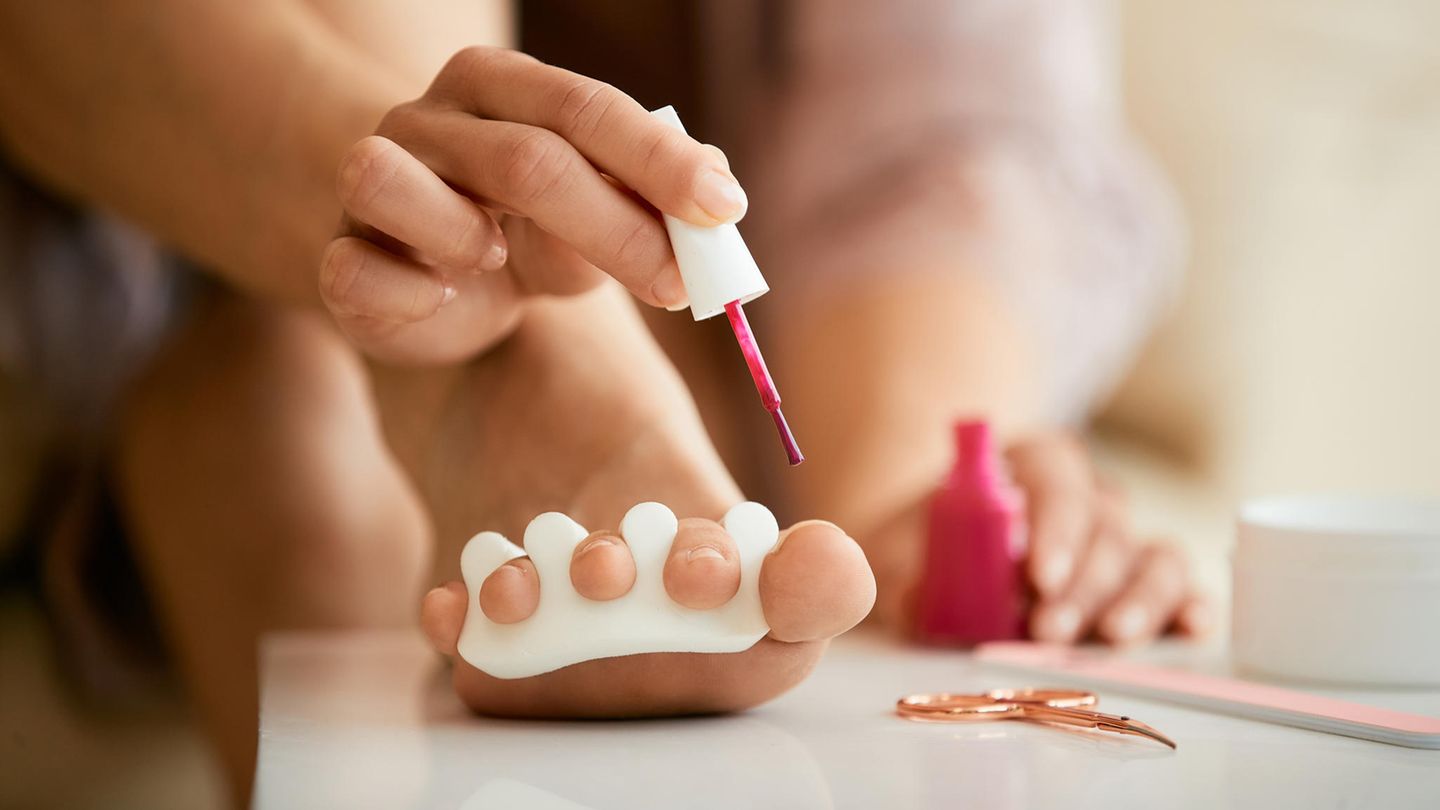Open shoes reveal at first glance who takes care of their feet – and who doesn’t. In addition to a regular pedicure, painted toenails are a must for many people (especially in summer).
A professional nail salon is often preferred to a bathroom at home. But painting your toenails isn’t that difficult. All you need for a beautiful and clean result is the right preparation – and the right accessories. Below we’ll explain step by step how you can quickly and skillfully put your toenails in the spotlight without the hassle of painting over them.
DIY pedicure: How to prepare your toenails
Washing feet
Before you paint your toenails, you should wash your feet to remove any dirt. Even better is a thorough which makes the cuticles nice and soft and therefore easier to remove.
Important: Do not apply cream to your feet after washing (yet), as the oil will make it harder for the nail polish to stick to your toes.
Remove cuticles
For a clean result, it is recommended to remove excess cuticles before painting – or you can push them back with the appropriate accessories (more on this in the next section).
Cutting toenails
Depending on how long your toenails are (and what length you prefer), you should trim them before painting them. Then use a file to ensure that your toenails have nice, even edges.
Cleaning toenails
If there is still old nail polish on your toes, it needs to be removed. The best way to remove it is with a remover – you can also use this to remove grease from unpainted toenails.
Painting toenails: These gadgets are helpful
In addition to the nail polish of your choice, there are a variety of tools that are designed to make painting your toenails easier, such as:
- Toe spacers: As the name suggests, this gadget helps to ensure that your toes do not accidentally touch each other while painting, thanks to the safety distance, and thus do not smear the paint. There are models made of foam or .
- Cuticle remover: Before painting, it is recommended (as described above) to remove the excess This will give you a straight line. Alternatively, you can also use a insert.
- Correction pen: With and a cotton pad, it is difficult to remove painted edges. A handy brush is much easier to use and is ideal for removing the paint. .
- Base coat: The so-called is applied before the actual (colored) nail polish and is intended to ensure that your toenails do not discolor. The base coat also ensures an even surface.
- Top coat: Finally, the colored (and dried) nail polish is applied with a sealed. The transparent top coat not only provides a beautiful shine, but also a long-lasting result. The top coat with the base coat is also available as .
How to make nail polish dry faster
As soon as the most important steps have been completed – from the pedicure to painting the toenails – the next challenge is already waiting: the critical time in which the color has to dry. There is nothing more annoying than ruining the clean result through a moment of inattention. To speed up the process, you can use different tricks and tools: either you dip your toenails briefly in cold water, which is supposed to harden the color more quickly. Or you use a so-called which is sprayed onto the toenails after painting. If you use gel or acrylic nail polish, you can also use a which is intended to significantly shorten the drying time.
How to avoid overpainting
Everyone knows this: you’re not paying attention for a moment, you apply the brush too vigorously – and the fresh nail polish runs over the edges of your toenail. The question arises: how can you avoid annoying overpainting? There are several tricks you can use when painting:
Firstly, you should always shake the paint well before applying it so that the varnish has a nice and even consistency. Secondly, it is helpful if you first paint the middle of the toenail – always away from the nail bed and towards the edge – and only then draw a line (on the right and left). Also make sure to leave a narrow, unpainted edge on the sides, this reduces the risk of overpainting. Another tip is to smear the edges around the toenail with Vaseline: This does not prevent overpainting, but it makes the paint easier to remove. Alternatively, use a to clean the edges.
More information can be found here.
Source: Stern
I am an author and journalist who has worked in the entertainment industry for over a decade. I currently work as a news editor at a major news website, and my focus is on covering the latest trends in entertainment. I also write occasional pieces for other outlets, and have authored two books about the entertainment industry.




